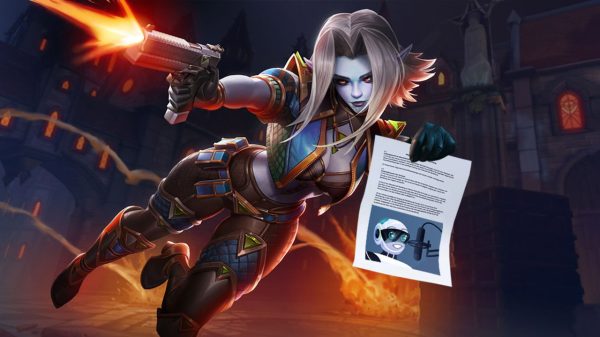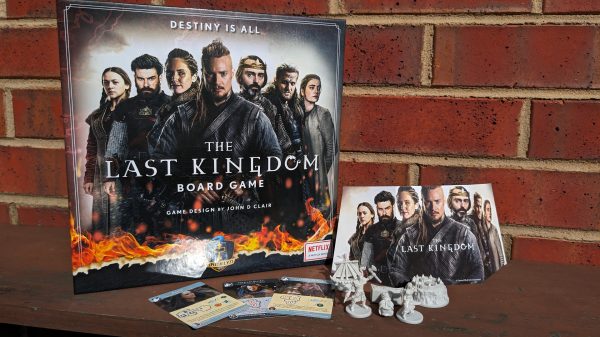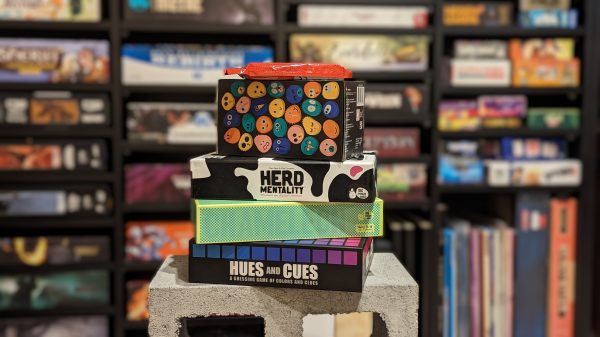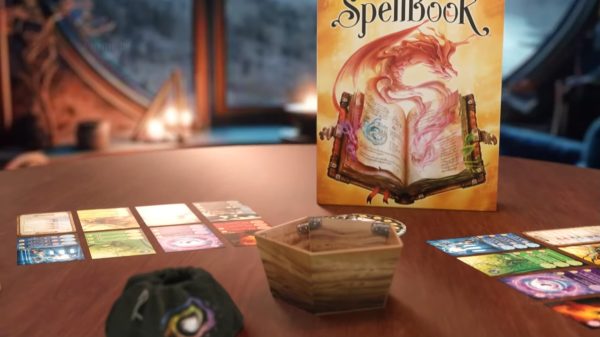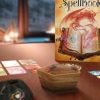I’m going to take a real leap of faith here and assume that you, lovely reader, are familiar with the concept of a battle royale. Whether in its original form as a Japanese novel/film or an insanely addictive video game like Fortnite or Apex Legends, the two key aspects stay the same – every competitor for themselves and there can only be one winner. We’ve seen battle royales pop up in almost every medium imaginable, so it stands to reason that a battle royale board game would be inevitable. Designed by François Rouzé and Jean-Marc Tribet, illustrated by Jacqui Davis and published by Kolossal Games, Reload is a fast-paced battle royale tabletop game with players fighting for gear, guns and, most importantly of all, fame.
In the not-so-distant future, faceless mega corporations are expanding their reach into the stars using genetically and cybernetically enhanced clones bred for combat and exploration. However, this is an expensive business, so the shady conglomerates partner with media moguls to fund the venture. This has resulted in live broadcasts beaming straight from training islands designed to test the clone soldiers right into the homes of rabid fans who want to see violence and action.
In Reload, you play as one of these clone soldiers, tasked with gaining the most fans by the end of the game. This is achieved by exploring the island and retrieving beacons, setting traps for your foes to fall into, getting into brawls and, naturally, taking out the opposition.

I’d like to say I was winning, so I will
Games of Reload can be played with two to four players in two different ways, Battle Royale and Team Royale. Team Royale can be played with four players or with two players controlling two characters each. This gives you the option to play a free-for-all match or with two teams that work together to win.
Each game takes place on a modular board made from various hexes with their own terrain type and associated actions. Eight map variations can be used using the nine different terrain types, providing a shakeup for subsequent games. The starting map introduces enough of the game’s mechanics to ease you into the experience, while the latter configurations demand more attention and reward strategy.
Each of the four playable characters has a mini, a player board and a few corresponding tokens. The characters each have a unique ability, such as being able to make one additional move, drawing an additional gear card or re-rolling combat dice during encounters. Each of the abilities is useful, but you won’t be leaning on them too heavily, so the balance feels just about right to where you won’t sprint to the box to get first pick.
After parachuting onto the map, using a dice roll to dictate how far you drift from your targeted landing spot, players will take turns moving, interacting and fighting, all using….dice. No, no, don’t stress, this isn’t Yahtzee with movement, it’s decidedly more clever and deliberate. On each player board are several slots tied to the actions you can take: move, interact, pick up, build, heal and fight. Each of these actions costs a certain number of die pips to complete, with the more worthwhile actions forcing you to commit a two or a one side to activate.

With better gear and strong combat dice, it looks like Blitz has this in the bag
Each character has five dice to use per turn, limiting the number of actions you can take before play moves to the next person. This forces some layer of thought, but it’s what those dice do after your turn is done that introduces some fun strategy. Once used, the dice are moved to the Combat Line on the left side of your player board, arranged from highest to lowest, and become your strength in combat. Combat boils down to comparing each die face from highest to lowest with your opponents, with one point of damage being dealt to the player with the lower value.
If you’re in a good old-fashioned donnybrook, the damage will be dealt back and forth, but with a ranged weapon, only the target will receive damage. If players take less than five actions on their turn, the unused dice go into a defence pool and can be rolled when attacked, creating a bit of a safety net and a deterrent for would-be attackers.
By exploring the island and picking up cargo, players can equip melee and ranged weapons, along with one-use items and body armour that can be used to modify dice or add additional dice to combat encounters. During the games I played, I found this system to have just the right amount of strategy so that you’ll think before you act, but not so much that you’ll sit there scratching your chin for minutes on end before throwing an axe at your friend.
Thematically, Reload’s approach to action economy and combat makes a lot of sense, with the act of running giving you a stronger position when you’re attacked because you’re on the bloody run. It also allows players to be a loot goblin and get armed to the teeth or outrun everyone and collect beacons, laying traps and erecting walls behind you. The variation is very much welcome.
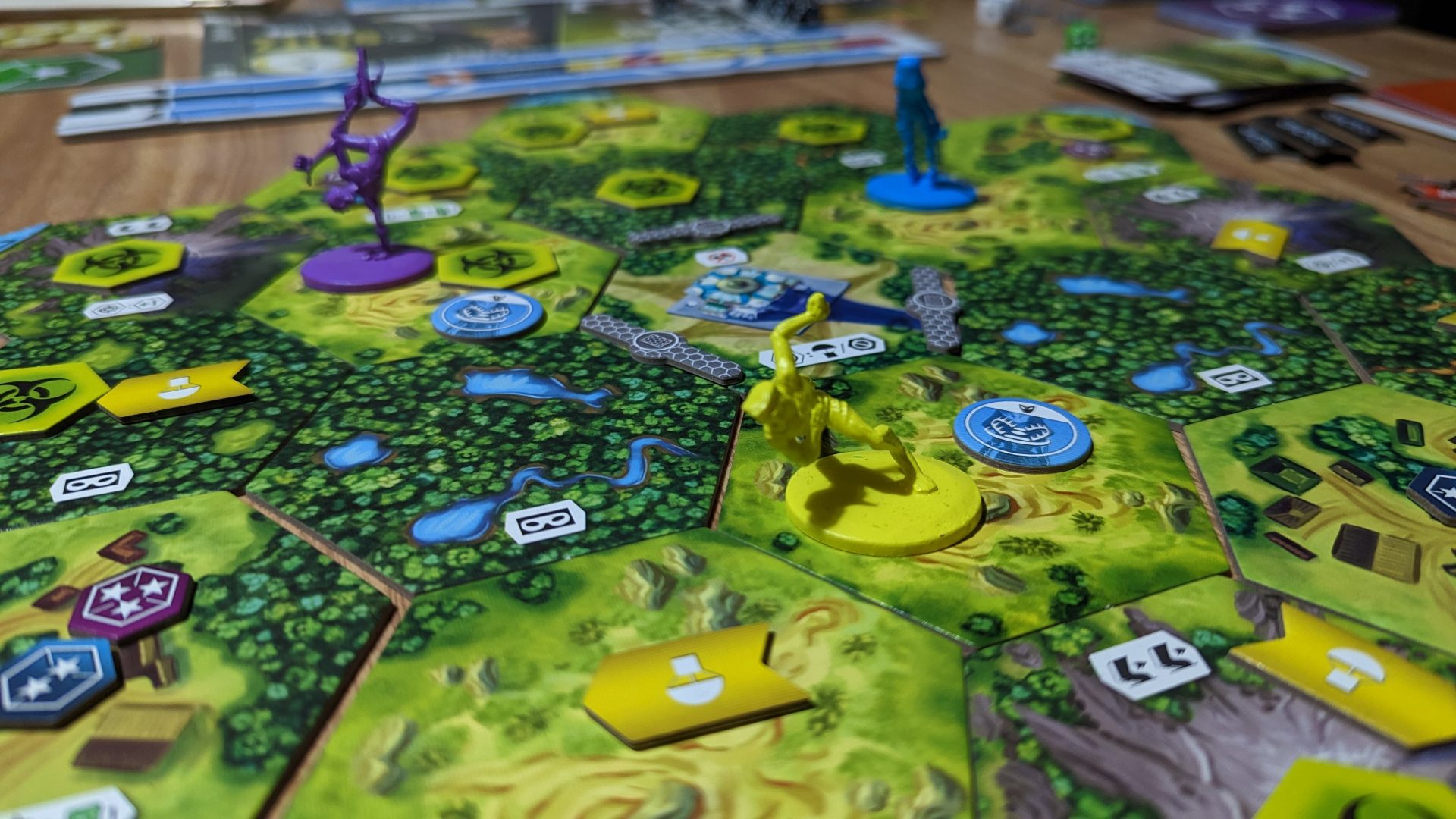
The modular map pieces provide some solid replayability
Once all players have had their turn, an event card will be revealed from the face-down deck, altering the map or adding further stakes to the game. Contamination cards will spread toxins over the island, shrinking the safe space, loot drops will create hotspots that promise guns and glory, and earthquakes will damage characters caught in specific areas. Not only do the events add a measure of unforeseeable danger, but they act as a timer, with the game ending once the deck runs dry.
At the end of the game, players will look at the respective fame trackers and amass the most fame. This is signified by placing small tokens onto the tracker as you earn them, creating a visual timeline of your match to look back on. The length of this token line determines the winner, but in the case of a tie, each token does have a point value.
While straightforward once you’re in the mix, Reload will likely be difficult for some to learn and impenetrable for others, thanks to a ludicrous amount of icons and a very messy rulebook. Setting up a game of Reload is explained with ease, but trying to decipher the rules around combat and simply taking a turn will test anyone’s patience. While this can partially be attributed to the game being translated from French, the overall layout and examples are also to blame. Equally as baffling are the copious amount of icons. While I admire trying to eliminate the need for written explanations, as it makes things cleaner and more accessible, the fact that an entire reference sheet is needed in a skirmish game is a bit too much for me.
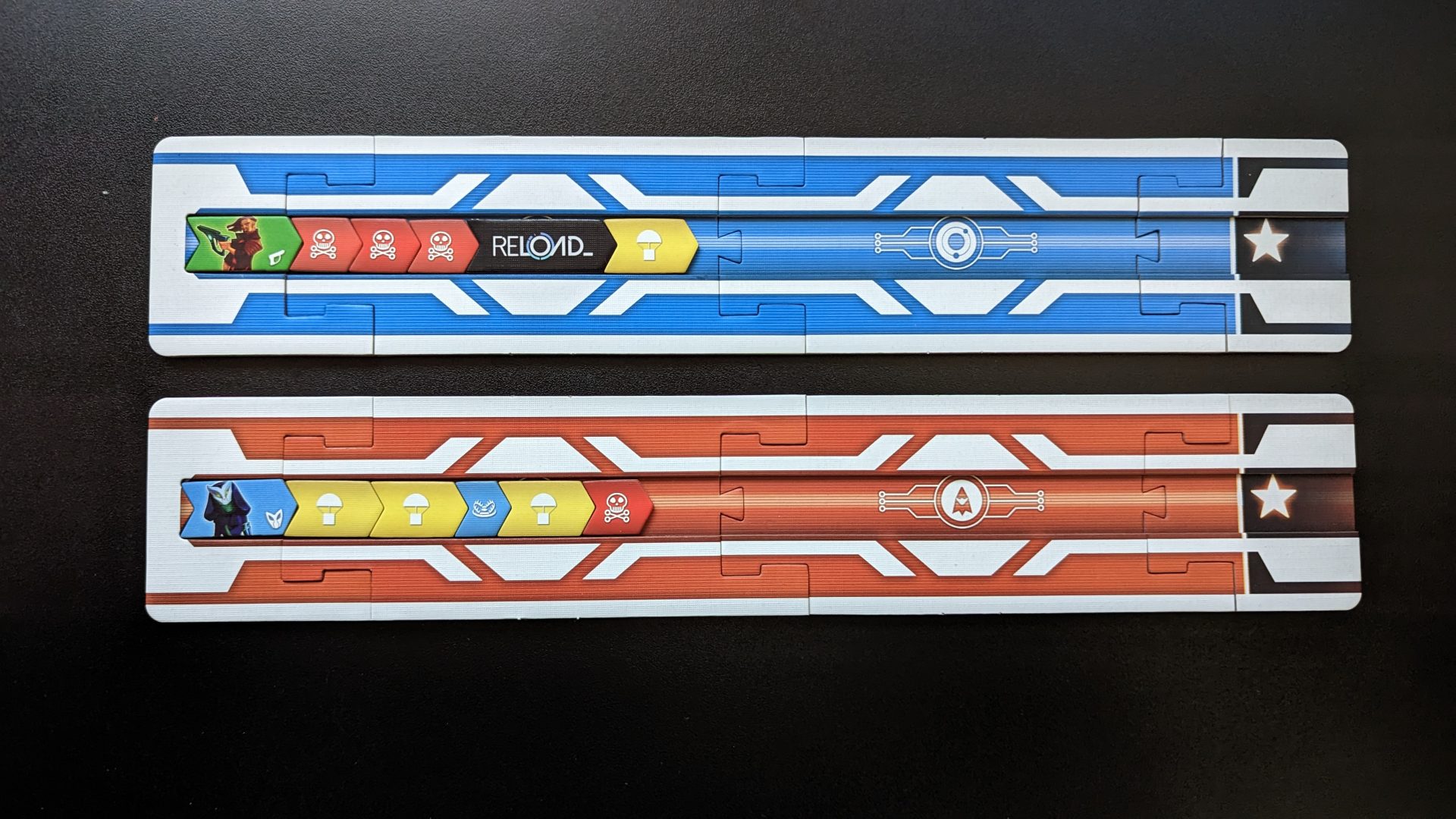
The fame tracker determines a winner, but it also chronicles your actions during the game
All of the artwork shown of cards, hexes and boards are bright and vibrant, matching the over-the-top premise, but I was left wanting a bit more from the player boards and miniatures, especially since the fame trackers are double-layered. In my opinion, any game that has you placing the die in a spot where they need to stay put should feature double-layered boards. The minis are fine, but the odd, rubbery plastic will have them bent and deformed, even if you follow the instructions and put them in warm water.
Final Thoughts
The idea of a battle royale board game made sense to me, but I wasn’t initially thrilled with the notion of a tabletop Apex or Fortnite. Thankfully, the risk versus reward action and combat system within Reload quickly brought me onside. Giving players the freedom to choose how they want to win and rewarding clever tactics is immediately attractive, especially when rounds are speedy, there’s no player elimination, and you’re always involved in the action. The painfully convoluted rulebook, overreliance on icons and so-so components could see Reload staying on the shelf, but that would be a shame, as it’s a fun and fast-paced skirmisher with plenty of positive qualities.
Review copy supplied by the publisher
Click here for information on WellPlayed’s review policy and ethics
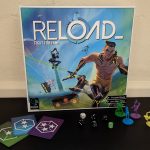



Adam's undying love for all things PlayStation can only be rivalled by his obsession with vacuuming. Whether it's a Dyson or a DualShock in hand you can guarantee he has a passion for it. PSN: TheVacuumVandal XBL: VacuumVandal Steam: TheVacuumVandal







